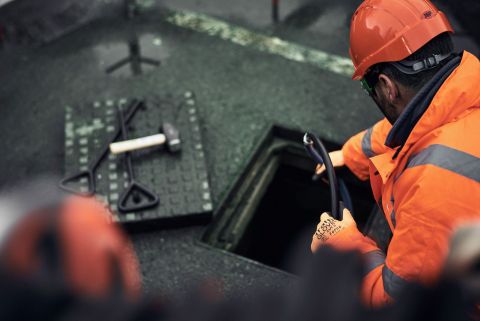Drain & Sewer Jargon & Terminology
We thought it would be super useful if we clarified and explained some of the more specialist terms relating to drains and sewers so you don’t feel so blown away by them. FS Drainage Services have put together a technical glossary breaking down the technical jargon.
Sludge
Sludge refers to the semi-solid material that is produced during the sewage treatment of private sewage as well as industrial or municipal wastewater. When fresh sewage enters a primary settling tank, almost half of the suspended solid matter will settle within 2 hours (depending on circumstances). This collection is referred to as ‘raw sludge’.
Foul Sewage
Foul sewage is all the used water from toilets, sinks, basins, baths, showers, bidets, dishwashers and washing machines in domestic, commercial and industrial properties. Must not be confused with surface water!
Surface Water
Surface water is rainwater which runs off roofs and paved areas in domestic, commercial and industrial premises across the UK.
Inflatable Packer
The equipment used to position the patch repair liner. Once inflated it will force the liner against the internal surface of the pipe.
Liner
The liner refers to the ‘tube’ of material used to repair the damaged drain pipe. It is typically manufactured to a specific length and diameter and then secured against the internal surface of the pipe to repair the damage.
Inversion
A method of installing a lining material into a damaged drain pipe. Instead of inflating the resin liner (forcing it against the internal surface of the pipe), water is injected into the liner and forces it to turn inside out pushing the resin impregnated side outwards against the internal surface of the pipe/drain.
Curing
The term most typically used to describe the process of having to cure the lining material. Curing methods include hot water, heat and UV lighting which harden the lining material against the damaged pipe.
Resin
Resin is used to make the lining material harden. The liner is impregnated with resin prior to being installed. The resin then cures and secures itself against the damaged pipe. The resin used is waterproof, resilient and fit-for-purpose.
Resin Injection
Essentially resin is injected into areas where water ingress is prominent. It is used to seal holes and cracks within drainage systems.
Really try and avoid letting medicines get into the tank. They can be really damaging to the environment around the tank.
Still Unsure?
We’re only a call away on 08006893497. If you’re still unsure and need some professional help or just some friendly advice then get in touch!

